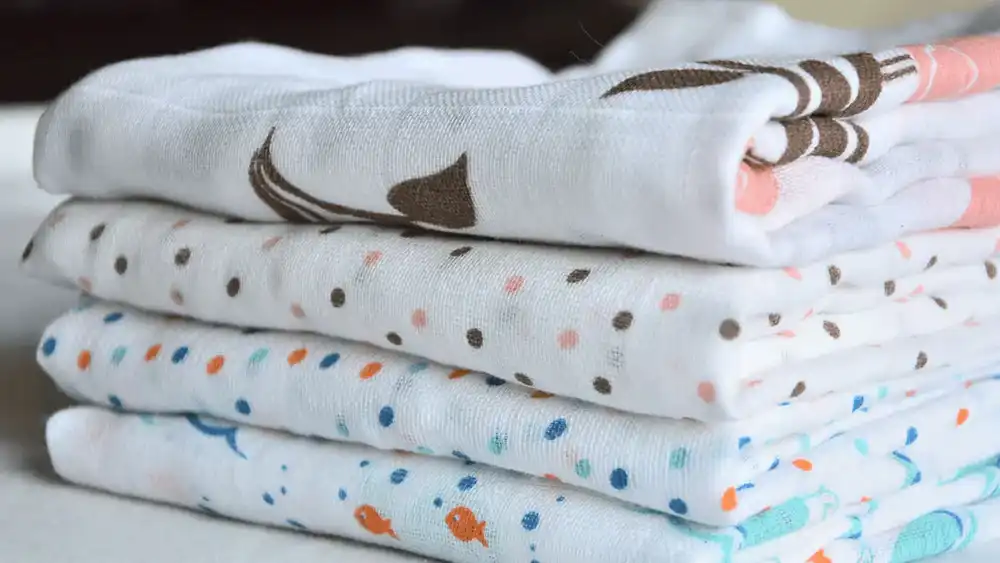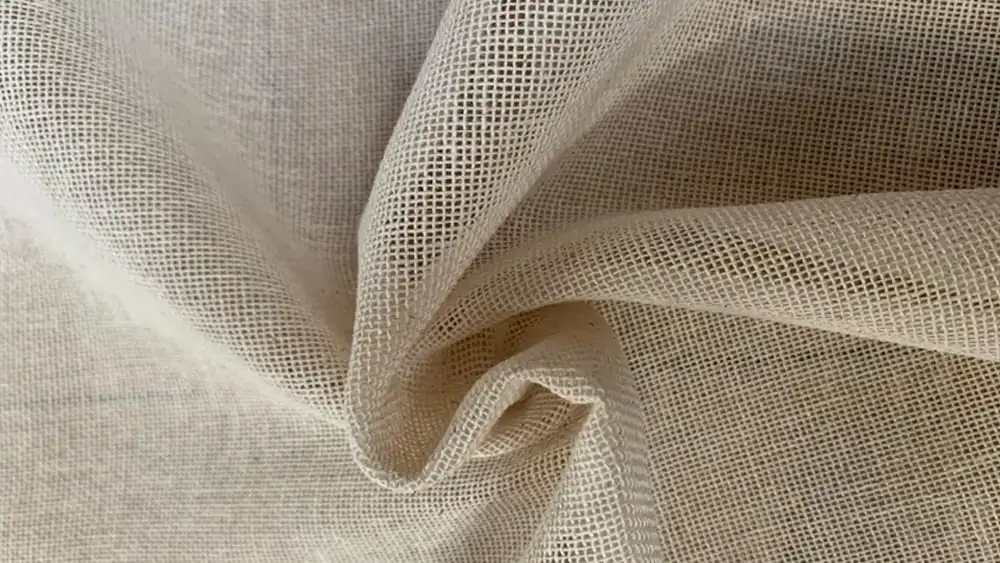When it comes to textiles, understanding the nuances between various fabrics is crucial for selecting the right material for your project. In this comprehensive guide, we delve into the disparities between Flour Sack Fabric and Muslin, shedding light on their unique characteristics, applications, and more.
Flour Sack Fabric and Muslin are two commonly used fabrics, each with its distinct properties and advantages. While they might seem similar at first glance, a closer examination reveals notable differences that can significantly impact their suitability for different purposes.
What Is Flour Sack Fabric
Flour sack fabric is a type of material that was traditionally used to make sacks for storing and transporting flour. It is made from 100% cotton, which gives it a soft and durable texture. The name “flour sack” comes from its original purpose of holding flour, but over time, people discovered its versatility and began using it for various other purposes.
One of the defining characteristics of flour sack fabric is its tight weave. This tight weave makes it strong and resilient, capable of withstanding heavy loads and frequent use. Despite its durability, flour sack fabric remains lightweight and breathable, making it suitable for a wide range of applications.
In addition to its strength and breathability, flour sack fabric is also highly absorbent. This absorbency makes it ideal for tasks such as straining liquids, covering dough during rising, or even as a makeshift towel or napkin.
Over the years, flour sack fabric has transcended its original purpose and become a popular choice for crafting and DIY projects. Its affordability, versatility, and eco-friendly nature make it a favorite among sewers, quilters, and artisans.
What Is Muslin Fabric
Muslin fabric is a versatile and lightweight textile that is woven from cotton yarns. It is known for its softness, breathability, and smooth texture, making it a popular choice for a wide range of applications.
Originally, muslin fabric was made in the city of Mosul in present-day Iraq, hence the name “muslin.” It gained popularity during the medieval period and became known for its quality and fine weave.
Muslin fabric typically has a plain weave, which means that the warp and weft yarns intersect at right angles, creating a simple and uniform pattern. This weave structure contributes to muslin’s lightweight and airy feel, making it comfortable to wear in warm climates or for delicate garments.
One of the defining characteristics of muslin fabric is its versatility. It can be found in various weights and densities, ranging from sheer and lightweight to heavier and more substantial. This versatility makes muslin suitable for a wide range of applications, including clothing, bedding, curtains, and even theatrical backdrops.
In addition to its use in textiles, muslin fabric is also favored by artists and photographers as a backdrop material due to its neutral color and smooth texture.
Flour Sack Fabric vs Muslin

Flour Sack Fabric and Muslin are two types of fabrics with distinct characteristics and applications. Let’s delve deeper into the differences between them:
| Aspect | Flour Sack Fabric | Muslin Fabric |
|---|---|---|
| Material Composition | 100% cotton | Typically cotton, but can include blends |
| Weave | Tight weave | Plain weave |
| Texture | Smooth with slight texture | Soft and smooth |
| Weight | Heavier and denser | Lightweight and airy |
| Absorbency | Exceptionally absorbent | Moderately absorbent |
| Durability | Very durable | Less durable, prone to fraying |
| Common Uses | – Kitchen towels and cloths <br> – Straining liquids <br> – Crafting projects | – Apparel <br> – Quilting <br> – Draping and upholstery |
Flour Sack Fabric, known for its tight weave and exceptional absorbency, is often preferred for culinary tasks such as straining liquids or covering rising dough. Its durability makes it suitable for kitchen towels and cloths, as well as for crafting projects that require resilience.
Muslin Fabric, with its soft texture and lightweight feel, is commonly used in apparel, quilting, and draping applications. Its versatility allows for various weights and densities, catering to different needs in the fashion and textile industries.
While both fabrics have their unique advantages and applications, understanding their differences can help in selecting the most suitable material for a particular project or task. Whether it’s for culinary endeavors or creative pursuits, Flour Sack Fabric and Muslin each offer distinct qualities that cater to diverse needs and preferences.
Muslin Fabric vs Cheesecloth

Muslin fabric and cheesecloth are both versatile textiles with distinct characteristics that make them suitable for various purposes. Here’s a detailed comparison between the two:
| Aspect | Muslin Fabric | Cheesecloth |
|---|---|---|
| Material | Woven from cotton yarns | Loose-woven cotton fabric |
| Weave | Typically has a plain weave | Looser and more open weave |
| Texture | Smooth and soft | Light and airy, slightly rough texture |
| Thickness | Available in various weights and densities | Generally lightweight and thin |
| Strength | Relatively strong and durable | Less durable, prone to tearing |
| Uses | Clothing, bedding, curtains, backdrops | Straining liquids, cheese making, cooking, crafting |
| Absorbency | Moderate absorbency | Highly absorbent, ideal for straining liquids |
| Filtering Capability | Limited filtering capability | Excellent for straining, filtering fine particles |
| Appearance | Solid and opaque | Semi-transparent with visible weave |
| Cost | Typically more expensive than cheesecloth | Generally more affordable |
Muslin fabric is characterized by its smooth texture, strength, and versatility, making it suitable for a wide range of applications such as clothing, bedding, and backdrops. Cheesecloth, on the other hand, is prized for its lightness, open weave, and high absorbency, making it ideal for straining liquids, filtering, and culinary tasks. While muslin fabric is generally more durable and opaque, cheesecloth excels in tasks requiring fine filtration and transparency.
Muslin vs Cotton Fabric

When comparing muslin fabric to cotton fabric, it’s essential to understand that muslin is actually a type of cotton fabric. Muslin is woven from cotton yarns, just like other cotton fabrics, but it possesses certain characteristics that differentiate it from other types of cotton textiles.
Here’s a breakdown of the key differences between muslin and typical cotton fabric:
| Feature | Muslin Fabric | Cotton Fabric |
|---|---|---|
| Origin | Historically woven in Mosul, Iraq | Cultivated and woven worldwide |
| Weave | Generally has a plain weave | Can have various weaves, such as plain or twill |
| Texture | Soft and smooth | Varies depending on weave and finish |
| Weight | Lightweight to medium weight | Can range from lightweight to heavy |
| Transparency | Can range from sheer to opaque | Typically opaque, but can vary |
| Uses | Versatile, used in clothing, drapery, | Versatile, used in clothing, bedding, towels, |
| bedding, crafts, and backdrops | upholstery, and more | |
| Cost | Generally affordable | Cost can vary depending on quality and type |
| Breathability | Highly breathable | Breathable, but varies based on weave and |
| weight | ||
| Durability | Can be durable depending on weave | Durable, but longevity can vary |
| and weight |
Muslin fabric is prized for its softness, breathability, and versatility. It is often chosen for its lightweight feel and smooth texture, making it ideal for clothing, drapery, and crafts where a soft and airy fabric is desired.
On the other hand, cotton fabric encompasses a wide range of textiles, each with its own weave, weight, and texture. While muslin is a type of cotton fabric, cotton fabric itself can vary greatly in terms of thickness, weave pattern, and intended use.
Muslin vs Gauze Fabric

Muslin and gauze fabric are both lightweight textiles woven from natural fibers, typically cotton. While they share some similarities, they also have distinct differences in terms of texture, weave, and applications.
Muslin Fabric:
Muslin fabric is known for its softness, smooth texture, and versatility. It is woven using a plain weave, where the warp and weft yarns intersect at right angles, creating a simple and uniform pattern. Muslin fabric comes in various weights and densities, ranging from sheer and lightweight to heavier and more substantial.
Gauze Fabric:
Gauze fabric, on the other hand, is characterized by its loose and open weave, resulting in a more textured and airy appearance. The loose weave of gauze fabric gives it a crinkled or wrinkled texture, making it lightweight and breathable. Gauze fabric is often used in medical settings for bandages and dressings due to its absorbent properties.
Comparison Table:
| Aspect | Muslin Fabric | Gauze Fabric |
|---|---|---|
| Texture | Soft and smooth | Textured and crinkled |
| Weave | Plain weave | Loose and open weave |
| Weight | Variable, ranging from light to heavy | Light and airy |
| Breathability | Good | Excellent |
| Absorbency | Moderate | High (especially in medical gauze) |
| Common Uses | Clothing, bedding, curtains, backdrops | Medical dressings, bandages, clothing |
While both muslin and gauze fabric are lightweight and woven from natural fibers, they differ in texture, weave, and common uses. Muslin fabric tends to be smoother and more versatile, suitable for a wide range of applications, while gauze fabric has a more textured and absorbent nature, making it ideal for medical purposes and lightweight garments.
Osnaburg Fabric vs Muslin

Osnaburg fabric and muslin are two types of textiles with distinct characteristics and uses. Let’s delve deeper into their differences:
| Feature | Osnaburg Fabric | Muslin Fabric |
|---|---|---|
| Material | Coarser, heavier fabric made from cotton or a blend | Lightweight fabric typically woven from 100% cotton |
| Texture | Rough texture with visible weave | Smooth texture with a fine weave |
| Weight | Generally heavier and denser | Lighter and more airy |
| Strength | Known for its strength and durability | Less durable compared to osnaburg |
| Absorbency | Moderately absorbent | Highly absorbent, making it ideal for various tasks |
| Common Uses | Heavy-duty applications such as upholstery, sacks, etc. | Clothing, drapery, quilting, and crafting projects |
Osnaburg fabric is characterized by its coarse texture and heavier weight, making it suitable for heavy-duty applications such as upholstery, sacks, and industrial purposes. It is known for its strength and durability, making it a preferred choice for tasks that require resilience.
On the other hand, muslin fabric is prized for its lightweight and breathable nature, as well as its smooth texture and fine weave. It is commonly used in clothing, drapery, quilting, and various crafting projects due to its versatility and ease of manipulation.
Conclusion
In conclusion, the disparities between Flour Sack Fabric and Muslin highlight the importance of understanding the unique qualities of each textile. While Flour Sack Fabric excels in durability, absorbency, and versatility for culinary and heavy-duty applications, Muslin fabric offers a lightweight, soft, and breathable option suitable for clothing, drapery, and crafting projects.
Whether you’re a seasoned crafter, a culinary enthusiast, or a homemaker seeking the perfect fabric for your projects, considering the differences between Flour Sack Fabric and Muslin can guide you towards making informed decisions.
If you’re interested in exploring these fabrics further or acquiring them for your projects, we welcome you to get wholesale from us at any time. Our wide selection of high-quality Flour Sack Fabric and Muslin ensures that you’ll find the perfect option to suit your needs.
